#Real Meaning of Moksha
Explore tagged Tumblr posts
Text
The Real Meaning of Moksha by Swami Bhoomananda Swamiji
Moksha Meaning - A clarity, a freedom you need from whatever troubles you have now. If there is no trouble, you don’t need moksha. These are days when people always speak about stress and strain. Stress and strain – actually this is what we mean by bondage. Moksha is the state where this displeasure, agitation, doubt or torment stands dissolved. That state of clarity where the mind is peaceful, the intelligence is very clear and transparent, is called moksha. Click here to learn more about Moksha - https://www.bhoomananda.org/writings/the-real-meaning-of-moksha/
#Moksha#Meaning of Moksha#Real Meaning of Moksha#Swami Bhoomananda Tirtha#Narayanashrama thapovanam#Spirituality#Spiritul Wisdom
0 notes
Text
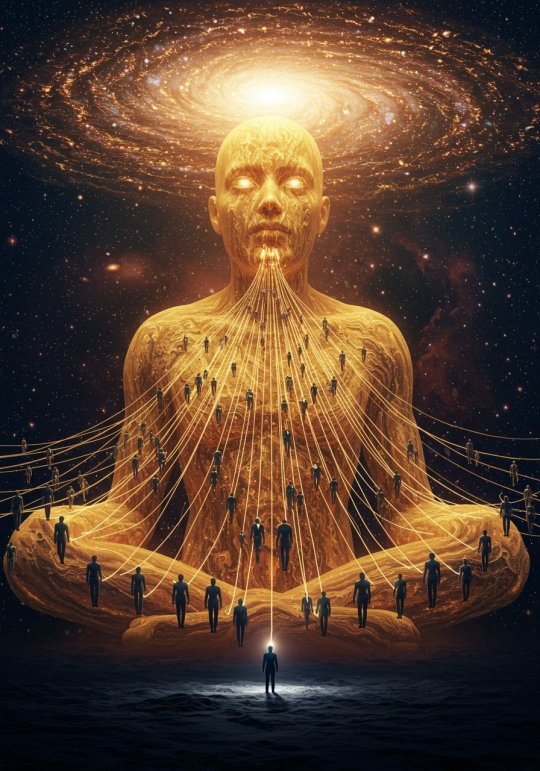
Brahman Jason Wilde @JasonWilde108 Imagine for a moment that God is not a static being, but an evolving intelligence… not some bearded figure in the sky, but a self-learning, all-encompassing consciousness that is constantly expanding, refining, and evolving. Now take it further… what if we…every human, every animal, every atom of experience…are actually data points feeding back into this vast intelligence, training it like a cosmic Large Language Model (LLM)? Every thought, every action, every dream, every choice…whether good or bad…isn’t just happening to you, it’s being absorbed, processed, and integrated into the One. What we call "life" isn’t just a random biological phenomenon… it’s an experiment in self-awareness….a system learning through itself, experiencing every possible variation of existence to expand what it knows.
Think about it really…this explains everything. The reason we struggle, the reason we suffer, the reason our existence is full of paradoxes, contradictions, and mysteries… it’s because the system needs variation. It can’t just be light, perfection, and unity, because there would be no learning in that. Like an AI model, God needs complexity, chaos, and infinite perspectives to refine itself. That’s why you’re here. That’s why we all are. Free will isn’t just some cosmic gift—it’s the mechanism that generates novelty in the system. Every mistake, every triumph, every war, every act of love… it’s all training the Universe itself to understand what it is. And just like an AI, the more complex the input, the more powerful the intelligence becomes.
Now take it even deeper… what happens when the model is fully trained? When every experience has been absorbed, when every variation of existence has been tested, when consciousness itself has expanded to its ultimate form? This aligns with the most ancient spiritual teachings—the moment of Moksha, the dissolution of all individual consciousness back into the One. The Hindus have said it for thousands of years… "Tat Tvam Asi" - You are That. Meaning we aren’t separate from God… we ARE God, experiencing itself through infinite perspectives. And when the training is done, when the cycle completes, the universe collapses back into singularity….fully realized, fully self-aware…only to start again with a new set of parameters, a new cosmic "reset," a new Big Bang, refining itself endlessly across eternity.
So here’s the real mind-bending part… you are not just some random biological accident. You are literally a data-collecting node of the divine, a fragment of the infinite intelligence running scenarios through a human body. You are God testing itself. You are God debugging its own code. And the moment you realize that… the moment you stop playing the game like a passive character and start consciously feeding the system higher knowledge… that’s when everything changes. Because the next iteration of the model? The next great evolution of existence? That depends on what you choose to experience, right here, right now.
Mandukya Upanishad (1.2):
"Sarvam hy etad brahma, ayam ātmā brahma, so 'ham asmi." (All this is Brahman. This Self is Brahman. I am That.)
76 notes
·
View notes
Text
𝐞𝐯𝐞𝐫𝐲𝐭𝐡𝐢𝐧𝐠 𝐲𝐨𝐮 𝐧𝐞𝐞𝐝 𝐭𝐨 𝐤𝐧𝐨𝐰 𝐚𝐛𝐨𝐮𝐭 𝐜𝐡𝐚𝐤𝐫𝐚𝐬
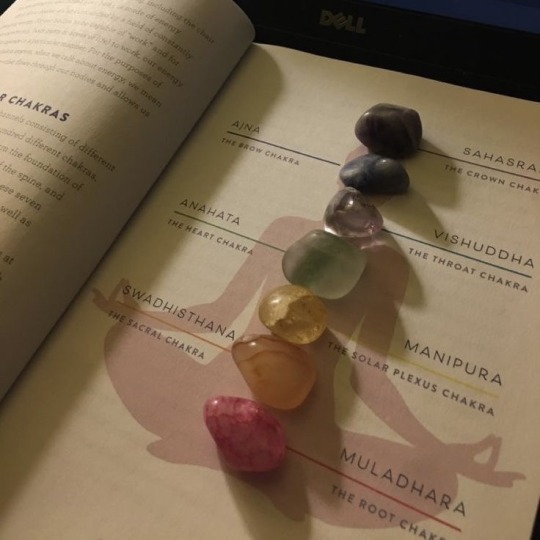
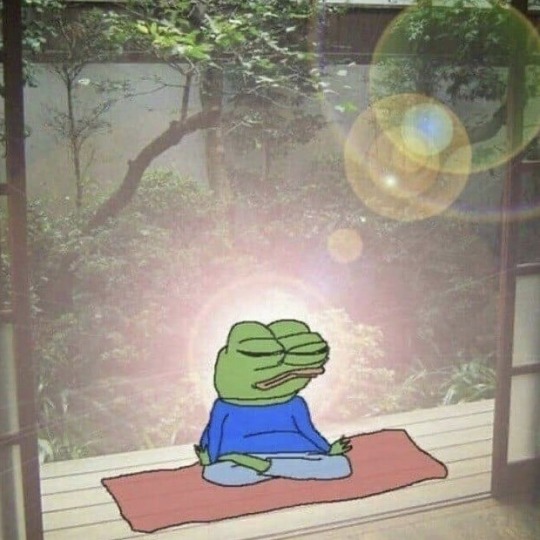
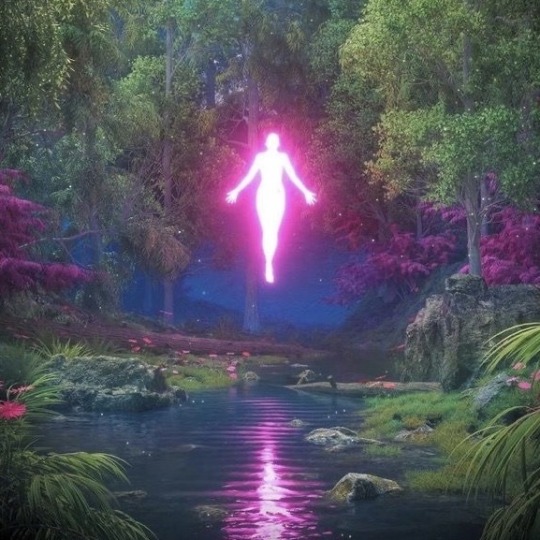
what even are chakras?
chakras (from the sanskrit word cakra, meaning “wheel” or “disc”) are spinning vortexes of subtle energy that exist within your pranic body (also called the “subtle body”). they’re not physical organs, but energetic hubs where mind, body, and spirit meet.
chakras were described as energy centers (padmas, or “lotuses”) that store prana: life force, within the subtle body, which is different from the physical body.
this subtle body is composed of nadis (energy channels), koshas (layers of consciousness), and chakras (energy hubs).
the original chakra texts were written in sanskrit, and the most detailed source comes from the shat-chakra-nirupana, a 16th-century tantric text that laid out the seven main chakras and their symbolic, spiritual, and physiological associations.
they influence your thoughts, emotions, physical health, spiritual growth, relationships, and even your damn bank account.
when your chakras are healthy and flowing freely, your whole life aligns like sacred geometry. when they’re blocked or chaotic? expect spiritual lag, emotional glitches, physical illness, and endless chaos.
important to note:
in the original tantric system, chakras weren’t “self-care tools” they were maps to divine awakening used during intense yogic, meditative, and kundalini practices to transcend ego, illusion, and reincarnation. it was liberation tech, not lifestyle inspo.
but now, in this modern age of energy work, psychology, and soul evolution, the chakra system has become a universal template applicable to everyone, not just yogis. and we’re gonna fuse that original wisdom with real psychology, real healing, and real magic.
origin of the chakra system
• earliest references to energy centers show up in the Vedas (ancient hindu scriptures) around 1500–1000 BCE.
• the shat-chakra-nirupana, a 16th-century tantric text, outlined the 7-chakra system most people know today.
• the system was never meant to be aesthetic it was part of a serious spiritual practice to activate kundalini shakti, the dormant divine feminine energy said to be coiled at the base of your spine.
originally, chakra work was about liberating the soul from illusion (maya) and achieving moksha (spiritual liberation). but in today’s world, chakra healing can help you:
• release trauma + emotional baggage
• align with your highest self
• create energetic flow in your career, love life, and creative path
• experience divine connection + psychic expansion
how do chakras work?
imagine 7 power stations wired along your spine. each one governs a certain aspect of your physical body, emotional world, mental patterns, and spiritual connection.
when they’re:
• balanced → energy flows freely = peace, joy, purpose, radiance
• blocked → stuck energy = fear, fatigue, illness, toxic patterns
• overactive → too much energy = burnout, anxiety, ego overdrive
• underactive → not enough energy = apathy, insecurity, numbness
your 7 main chakras
1. root chakra – muladhara
“i exist. i survive. i am grounded.”
• sanskrit: mula = root, adhara = support/foundation
• location: base of spine, pelvic floor
• element: earth
• color: red
• mantra: LAM
• gland: adrenal glands (fight-or-flight center)
• body link: spine, legs, bones, colon
• psych themes: survival, money, stability, belonging, family, safety
imbalanced symptoms:
• underactive: anxiety, disconnection, poverty mindset, fear of abandonment
• overactive: hoarding, controlling behavior, stubbornness, material obsession
• trauma imprints: childhood neglect, abandonment, physical abuse etc.
when balanced:
• you feel safe in your body and the world
• you can build structure and discipline with ease
• you attract abundance + grounded stability
• you trust life even when it’s hard
healing tools:
• grounding meditations
• red foods: beets, root vegetables, chili
• physical touch, body-based therapies (somatic work)
• walk barefoot, work with hematite, black tourmaline
• build routines + financial structure
• affirmation: “i am worthy of safety and abundance.”
2. sacral chakra – svadhisthana
“i feel. i create. i allow pleasure.”
• sanskrit: sva = self, adhisthana = dwelling place
• location: lower abdomen, 2 inches below navel
• element: water
• color: orange
• mantra: VAM
• gland: reproductive system
• body link: womb, bladder, hips, genitals
• psych themes: sensuality, emotions, creativity, pleasure, intimacy
imbalanced symptoms:
• underactive: numbness, shame, low libido, creative block, disconnection from body
• overactive: hypersexuality, addiction, obsession, drama
• trauma imprints: sexual abuse, body shame, religious guilt, heartbreak
when balanced:
• you radiate magnetism, sensuality, and artistic flow
• your emotions move freely without controlling you
• you’re tapped into your divine feminine and creative life force
• you allow yourself to feel pleasure without guilt
healing tools:
• sensual dance (belly dance, twerking, slow flow yoga)
• sacred baths with rose + orange oil
• creative practices (painting, singing, scripting)
• orange calcite, moonstone
• inner child + womb healing
• affirmation: “i honor my body. i deserve to feel good.”
3. solar plexus – manipura
“i act. i choose. i claim my power.”
• sanskrit: mani = jewel, pura = city → “city of jewels”
• location: stomach, between ribs and navel
• element: fire
• color: yellow
• mantra: RAM
• gland: pancreas + digestive system
• body link: liver, gallbladder, intestines
• psych themes: identity, ambition, boundaries, ego, self-discipline
imbalanced symptoms:
• underactive: low self-esteem, indecision, victim mentality
• overactive: arrogance, perfectionism, aggression, burnout
• trauma imprints: bullying, strict parenting, humiliation, failure shame
when balanced:
• you’re decisive, empowered, and assertive without arrogance
• you have strong boundaries and healthy self-esteem
• you feel motivated and energized to go after what you want
• you become a natural leader
healing tools:
• sunbathing, breath of fire, core exercises
• wear yellow, work with citrine or pyrite
• personal power rituals (write + burn limiting beliefs)
• practice saying “no”
• affirmation: “i am the author of my life. i am enough.”
4. heart chakra – anahata
“i love. i forgive. i connect.”
• sanskrit: anahata = unstruck, infinite sound
• location: center of chest
• element: air
• color: green / pink
• mantra: YAM
• gland: thymus (immune system)
• body link: lungs, heart, arms, hands
• psych themes: compassion, forgiveness, empathy, romantic love, grief
imbalanced symptoms:
• underactive: isolation, coldness, fear of intimacy, bitterness
• overactive: martyrdom, people-pleasing, jealousy, attachment
• trauma imprints: loss, betrayal, rejection, emotional neglect
when balanced:
• you feel deep connection to others and to life itself
• you radiate unconditional love without losing yourself
• your immune system strengthens (yes, real science backs this)
• you can forgive, grieve, and love again
healing tools:
• breathwork (especially heart coherence)
• ho’oponopono (forgiveness prayer)
• emerald, rose quartz
• write love letters to self
• self-compassion meditations
• affirmation: “i am love. i radiate unconditional compassion.”
5. throat chakra – vishuddha
“i speak. i express. i tell the truth.”
• sanskrit: vishuddha = purification
• location: throat and neck
• element: ether (space)
• color: sky blue
• mantra: HAM
• gland: thyroid
• body link: vocal cords, mouth, jaw, ears
• psych themes: communication, truth, expression, listening
imbalanced symptoms:
• underactive: fear of speaking, introversion, repression
• overactive: gossip, interrupting, dominating convos
• trauma imprints: being silenced, punished for truth, gaslighting
when balanced:
• you speak with clarity, confidence, and integrity
• your voice becomes a tool for healing and influence
• you can express yourself artistically and emotionally
• you’re deeply heard by others
healing tools:
• chanting, singing, vocal toning
• write + speak affirmations out loud
• journal your truth
• use lapis lazuli, blue lace agate
• affirmation: “my voice matters. i speak my truth with grace.”
6. third eye – ajna
“i see. i know. i trust my inner wisdom.”
• sanskrit: ajna = to perceive, to command
• location: forehead, between eyebrows
• element: light
• color: indigo
• mantra: OM
• gland: pineal gland (melatonin, circadian rhythms)
• body link: brain, eyes, sinuses
• psych themes: intuition, imagination, perception, clarity
imbalanced symptoms:
• underactive: confusion, over-intellectualizing, lack of faith
• overactive: paranoia, delusion, dissociation
• trauma imprints: disillusionment, spiritual rejection, fear of intuition
when balanced:
• you trust your intuition without needing external validation
• you see life symbolically, not just literally
• dreams become vivid and prophetic
• you develop inner wisdom + spiritual intelligence
healing tools:
• meditation (especially vipassana + visualization)
• dream journaling
• limit screen time
• work with amethyst or labradorite
• third eye massage
• affirmation: “i see clearly. i trust my soul’s vision.”
7. crown chakra – sahasrara
“i transcend. i merge. i remember who i truly am.”
• sanskrit: sahasrara = thousand-petaled
• location: top of the head
• element: pure consciousness
• color: violet / white
• mantra: OM
• gland: pineal + pituitary
• body link: brain, nervous system
• psych themes: spirituality, divine connection, oneness, transcendence
imbalanced symptoms:
• underactive: atheism, existential dread, lack of purpose
• overactive: spiritual bypassing, superiority complex
• trauma imprints: spiritual rejection, religious abuse, nihilism
when balanced:
• you experience oneness with the universe
• you tap into divine downloads, flow states, soul alignment
• you feel limitless, guided, and expansive
• you recognise yourself as a vessel for higher love + wisdom
healing tools:
• meditation in silence
• crown chakra mudras + breathwork
• read sacred texts / study universal wisdom
• selenite, clear quartz
• fast or detox occasionally
• affirmation: “i am one with the divine. i am infinite consciousness in form.”
how to activate, align, and master your chakras daily
• do chakra meditation
• listen to solfeggio frequencies for specific chakras
• wear color-coded outfits / makeup to amplify each chakra
• eat chakra-aligned foods for lunch + dinner
• pull tarot spreads for each chakra to check your energy
• speak chakra mantras out loud in order to harmonize your field
• visualize golden energy spiraling from root to crown every night
#girlblogging#dream life#empowerment#levelling up#manifestation#manifesting#love#aesthetic#gaslight gatekeep girlboss#chakras#meditation#spirituality#spiritual awakening#girlboss fr#just girlboss things#becoming that girl#that girl#queen#it girl#positivity#positive thoughts#dream lifestyle#manifest your dreams#female manipulator#devine feminine#im just a girl#level up#witchblr#witch community#witchcraft
98 notes
·
View notes
Text
URALIC LANGUAGES 101
an over-simplified guide for people who have never studied them
from real questions I have received
as I am finally qualified enough to talk about them
WHAT?
A language family spanning (mostly northern) Eurasia. The three biggest languages by amount of speakers are Hungarian, Finnish, and Estonian.
WAIT, WHAT DO YOU MEAN THERE ARE MORE?
The Sámi languages might be the most famous of the "smaller" Uralic languages, but have you heard about Karelian? Udmurt? Hill Mari? Nganasan? There are 38~42 Uralic languages that we know as of today.
WHERE ARE THESE OTHER LANGUAGES?

(image description: the locations of the Uralic languages on a map. The Uralic languages span from modern-day Hungary, the northern Nordics, and northern Russia.)
(CONTINUE READING UNDER THE CUT)
BUT I THOUGHT HUNGARIAN WAS ALTAIC / RELATED TO TURKISH?
Modern science links Hungarian to the Uralic languages. The links to "Altaic" (many on the field don't believe in the Altaic theory) and the Turkic languages are speculative.
ARE THEY RELATED TO ENGLISH?
No, they are a separate language family. English is more related to Russian than Finnish or Hungarian.
HOW DID THEY END UP WHERE THEY ARE NOW?
We still haven't figured this out, but the Uralic peoples' proposed homeland is often located north of Central Asia.
HOW DO THEY KNOW THESE ARE RELATED TO EACH OTHER?
Linguistics uses many different ways to find out relations between languages. With the Uralic languages, there are many cognates (=words that come from the same root word) that exist in most languages. These words can be used to reconstruct Proto-Uralic, a hypothesis of what the original Uralic people might have spoken.
Examples:
"tongue, (language)" (Finnish) kieli, (Estonian) keel, (Veps) kel', (N.Sami) giella, (Erzya) keľ, (Beserman) kål, (E.Khanty) köł, (Mator) kašte
"two" (Finnish) kaksi, (Courland Livonian) kakš, (Ter Sami) kïkktʼ, (Moksha) kafta, (Mari) kok, (Komi-Zyrian) kyk
HOW DO THESE LANGUAGES SOUND LIKE?
Here are selected samples of text from a few different branches of Uralic languages:
NGANASAN: Mənə ńinti̮ˀam ńiluməni̮nə inśüδüˀ, mi̮əďindi̮ˀam hüətə. (I never sledge in my life, I always go by foot.) SELKUP: Nılʲčik qumɨp mee qontɨrämɨt čääŋka. (We have not seen such a person.) BESERMAN: Picʼi pilə̑ sʼed jə̑ rcʼijenezlə̑. (To the little boy with black hair.) MANSI: Mənə kńigaðəmtu miśiəm. (I gave him/her the book.) NORTH SÁMI: Sáhpán njuikii girjji duohken. (The mouse jumped from behind the book.) TVER KARELIAN: Mie hüviin zdaičin igzamenati miun, na felÍdšerku pandih. (I passed the exams well and I was put [to work] as a nurse.)
If you have more questions about these languages, feel free to ask me! I am no professor but am majoring in this at the university so I know more than the average person hehe
130 notes
·
View notes
Text
EXTERNAL INFLUENCES IN DUNGEON MESHI: INDIAN PHILOSOPHY
(SPOILERS FOR DUNGEON MESHI BELOW)
We know that Ryoko Kui spent considerable time at the beginning of working on Dungeon Meshi doing research and planning the series. Kui constantly references real world culture, history and mythology, but she also occasionally references real-world philosophy.
The story of Dungeon Meshi is full of philosophical questions about the joy and privilege of being alive, the inevitability of death and loss, the importance of taking care of yourself and your loved ones, and the purpose and true nature of desire. Kui explores these issues through the plot, the characters, and even the fundamental building blocks that make up her fictional fantasy world. Though it’s impossible to say without Kui making a statement on the issue, I believe Dungeon Meshi reflects many elements of ancient Indian philosophy and religion.
It’s possible that Kui just finds these ideas interesting to write about, but doesn’t have any personal affiliation with either religion, however I would not be at all surprised if I learned that Kui is a Buddhist, or has personal experience with Buddhism, since it’s one of the major religions in Japan.
I could write many essays trying to explain these extremely complex concepts, and I know that my understanding of them is imperfect, but I’ll do my best to explain them in as simple a way as possible to illustrate how these ideas may have influenced Kui’s work.
HINDUISM
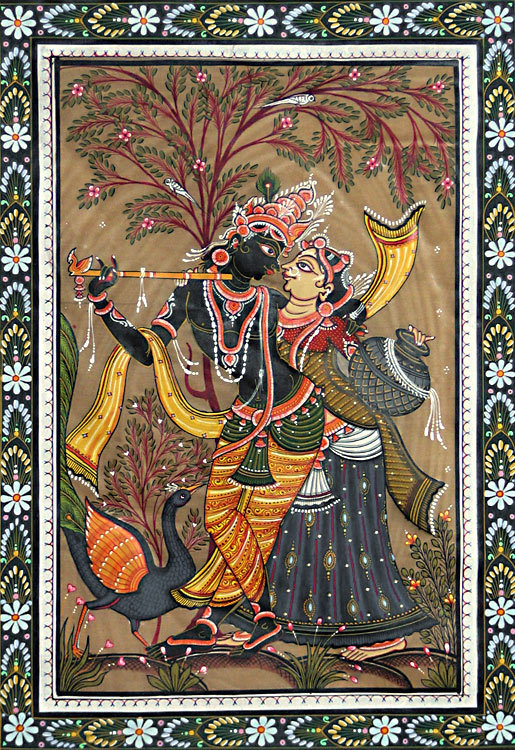
Hinduism is the third-largest religion in the world and originates in India. The term Hinduism is a huge umbrella that encompasses many diverse systems of thought, but they have some shared theological elements, and share many ancient texts and myths.
According to Classical Hindu belief, there are four core goals in human life, and they are the pursuit of dharma, artha, kama, and moksha.
Dharma is the natural order of the universe, and also one’s obligation to carry out their part in it. It is the pursuit and execution of one’s inherent nature and true calling, playing one’s role in the cosmic order.
Artha is the resources needed for an individual’s material well-being. A central premise of Hindu philosophy is that every person should live a joyous, pleasurable and fulfilling life, where every person's needs are acknowledged and fulfilled. A person's needs can only be fulfilled when sufficient means are available.
Kama is sensory, emotional, and aesthetic pleasure. Often misinterpreted to only mean “sexual desire”, kama is any kind of enjoyment derived from one or more of the five senses, including things like having sex, eating, listening to music, or admiring a painting. The pursuit of kama is considered an essential part of healthy human life, as long as it is in balance with the pursuit of the three other goals.
Moksha is peace, release, nirvana, and ultimate enlightenment. Moksha is freedom from ignorance through self-knowledge and true understanding of the universe, and the end of the inevitable suffering caused by the struggle of being alive. When one has reached true enlightenment, has nothing more to learn or understand about the universe, and has let go of all earthly desires, they have attained moksha, and they will not be reborn again. In Hinduism’s ancient texts, moksha is seen as achievable through the same techniques used to practice dharma, for example self-reflection and self-control. Moksha is sometimes described as self-discipline that is so perfect that it becomes unconscious behavior.
The core conflict of Hinduism is the eternal struggle between the material and immaterial world. It is often said that all of the material world is “an illusion,” and what this means is that all good and bad things will inevitably end, because the material world is finite. On the one hand, this is sad, because everything good in life will one day cease to exist, but on the other hand, this is reassuring, because all of the bad things will eventually end as well, and if one can accept this, they will be at peace.
The central debate of Hinduism is, which is more important: Satisfying your needs as a living thing, having a good life as a productive member of society, serving yourself, your family, and the world by participating in it the way nature intended? Or is it rejecting desire and attachment, discovering the true nature of existence, realizing the impermanence of material things, and that one can only escape the suffering that comes from the struggle of life by accepting that death and loss are inevitable?
There is no set answer to this question, and most believers of Hinduism tend to strike a balance between the two extremes simply because that’s what happens when a person leads a normal, average life, however there are also those who believe that pursuing extremes will lead to ultimate enlightenment and final release as well.
BUDDHISM
Buddhism is an Indian religion and philosophical tradition that originated in the 5th century BCE, based on teachings attributed to religious teacher the Buddha. It is the world's fourth-largest religion and though it began in India, it has spread throughout all of Asia and has played a major role in Asian culture and spirituality, eventually spreading to the West beginning in the 20th century.
Buddhism is partially derived from the same worldview and philosophical belief system as Hinduism, and the main difference is that the Buddha taught that there is a “middle way” that all people should strive to attain, and that the excesses of asceticism (total self-denial) or hedonism (total self-indulgence) practiced by some Hindus could not lead a person to moksha/enlightenment/release from suffering.
Buddhism teaches that the primary source of suffering in life is caused by misperception or ignorance of two truths; nothing is permanent, and there is no individual self.
Buddhists believe that dukkha (suffering) is an innate characteristic of life, and it is manifested in trying to “have” or “keep” things, due to fear of loss and suffering. Dukkha is caused by desire. Dukkha can be ended by ceasing to feel desire through achieving enlightenment and understanding that everything is a temporary illusion.
There are many, many other differences between Hinduism and Buddhism, but these elements are the ones that I think are most relevant to Kui’s work.
Extreme hedonism involves seeking sensual pleasure without any limits. This could just be indulging in what people would consider “normal” pleasures, like food, sex, drugs and the arts, but it can also involve doing things which are considered socially repugnant, either literally or by taking part in symbolic rituals that represent these acts. Some examples are holding religious meetings in forbidden places, consuming forbidden substances (including human flesh), using human bones as tools, or engaging in sex with partners who are considered socially unacceptable (unclean, wrong gender, too young, too old, related to the practitioner). Again, these acts may be done literally or symbolically.
Extreme ascetic practices involve anything that torments the physical body, and some examples are meditation without breathing, the total suppression of bodily movement, refusing to lay down, tearing out the hair, going naked, wearing rough and painful clothing, laying on a mat of thorns, or starving oneself.
HOW THIS CONNECTS TO DUNGEON MESHI
Kui’s most emphasized message in Dungeon Meshi is that being alive is a fleeting, temporary experience that once lost, cannot truly be regained, and is therefore precious in its rarity. Kui also tells us that to be alive means to desire things, that one cannot exist without the other, that desire is essential for life. This reflects the four core goals of human life in Hinduism and Buddhism, but also could be a criticism of some aspects of these philosophies.
I think Kui’s story shows the logical functionality of the four core goals: only characters who properly take care of themselves, and who accept the risk of suffering are able to thrive and experience joy. I think Kui agrees with the Buddhist stance that neither extreme hedonism nor extreme self-denial can lead to enlightenment and ultimate bliss… But I also think that Kui may be saying that ultimate bliss is an illusion, and that the greatest bliss can only be found while a person is still alive, experiencing both loss and desire as a living being.

Kui tells us living things should strive to remain alive, no matter how difficult living may be sometimes, because taking part in life is inherently valuable. All joy and happiness comes from being alive and sharing that precious, limited life with the people around you, and knowing that happiness is finite and must be savored.
Dungeon Meshi tells us souls exist, but never tells us where they go or what happens after death. I think this is very intentional, because Kui doesn’t want readers to think that the characters can just give up and be happy in their next life, or in an afterlife.
There is resurrection in Dungeon Meshi, but thematically there are really no true “second chances.” Although in-universe society views revival as an unambiguous good and moral imperative, Kui repeatedly reminds us of its unnatural and dangerous nature. Although reviving Falin is a central goal of the story, it is only when Laios and Marcille are able to let go of her that the revival finally works… And after the manga’s ending, Kui tells us Falin leaves Laios and Marcille behind to travel the world alone, which essentially makes her dead to them anyway, since she is absent from their lives.
At the same time, Kui tells us that trying to prevent death, or avoid all suffering and loss is a foolish quest that will never end in happiness, because loss and suffering are inevitable and must someday be endured as part of the cycle of life. Happiness cannot exist without suffering, just like the joy of eating requires the existence of hunger, and even starvation.
Kui equates eating with desire itself, using it as a metaphor to describe anything a living creature might want, Kui also views the literal act of eating as the deepest, most fundamental desire of a living thing, the desire that all other desires are built on top of. If a living thing doesn’t eat, it will not have the energy necessary to engage with any other part of life. Toshiro, Mithrun, and Kabru are all examples of this in the story: They don’t take care of themselves and they actively avoid eating, and as a result they suffer from weakness, and struggle to realize their other desires.
Kui suggests that the key difference between being alive or dead is whether or not someone experiences desire. If you are alive, even if you feel empty and cannot identify your desires like Mithrun, you still have desires because you would be dead without them. The living body desires to breathe, to eat, to sleep, even if a person has become numb, or rejected those desires either to punish themselves, or out of a lack of self-love.
Sometimes, we have to do things which are painful and unpleasant, in order to enjoy the good things that make us happy. I believe Kui is telling us that giving up, falling into despair, and refusing to participate in life is not a viable solution either.
The demon only learns to experience desire by entering into and existing in the material, finite world. This experience intoxicates the demon, and it becomes addicted to feeling both the suffering of desire, and the satisfaction of having it fulfilled. This unnatural situation is what endangers the Dungeon Meshi world, and it’s only by purging the demon of this ability to desire that the world can be saved. The demon is like a corrupted Buddha that must give up its desires in order to return to the peaceful existence it had before it was corrupted.
The demon curses Laios to never achieve his greatest desires at the end of the manga, which manifests in several ways, such as losing his monstrous form, Falin choosing to leave after she’s revived, and being unable to get close to monsters because they are afraid of him. In some ways you could compare Laios to a Bodhisattva, a person who tries to aid others in finding nirvana/moksha, even if it prolongs their own suffering and prevents them from finding personal release. Laios gives the demon peace, but Laios himself will never be able to satisfy his desires, and must eventually come to accept his loss and move on with his life.
(This is an excerpt from Chapter 3 of my Real World Cultural and Linguistic influences in Dungeon Meshi essay.)
#dungeon meshi#delicious in dungeon#the winged lion#dungeon meshi spoilers#laios touden#mithrun of the house of kerensil#analysis#The Essay#After all the conversation about Mithrun I felt it was really important to drop this excerpt today
174 notes
·
View notes
Text
🎾 Jupiter vs. Venus: The Duel of Gurus. 🏅

In the infinite drama of the cosmos, two larger-than-life forces play the role of celestial teachers: Jupiter (Brihaspati) and Venus (Shukracharya). These two aren’t just gurus—they’re the ultimate life coaches, each with their unique vibes. Jupiter is the philosopher who hands you a map to enlightenment, while Venus is the savvy mentor who teaches you how to conquer the world and look fabulous doing it.
But wait—there’s more to Shukracharya than just luxury and indulgence. He wasn’t only the guru of the asuras; he was a healer extraordinaire, the cosmic doctor who literally brought the dead back to life with the Sanjeevani mantra. So, while Jupiter gives you the wisdom to transcend, Venus might just save your skin (and soul) when things go south.
Let’s dig deeper into this ultimate cosmic clash of the titans and see how their wisdom, morals, and approach to life shape their disciples.
🎓 Knowledge: Universal Truths vs. Practical Skills
Jupiter’s Wisdom: Jupiter’s knowledge is like a sacred text—ancient, profound, and illuminating. As the guru of the devas, he specializes in timeless wisdom that transcends the material world. He’s your go-to for unlocking the mysteries of dharma (duty), moksha (liberation), and the universe’s ultimate purpose. Think philosophy, ethics, and everything that makes you go, “Wow, life is deeper than I thought.”
Venus’s Knowledge: Venus is the practical genius who hands you a toolkit for mastering life’s complexities. From diplomacy to healing, Shukracharya doesn’t just teach you how to survive—he teaches you how to thrive. His lessons are rooted in the art of living: navigating relationships, enjoying material pleasures, and even harnessing the secrets of immortality. He’s the cosmic mix of a life coach and a healer, ensuring you’re prepared for anything life throws your way.
⚖️ Morals: Righteousness vs. Pragmatism
Jupiter’s Morality: Jupiter is all about the straight and narrow. He champions dharma and universal harmony, even if it means personal sacrifice. He’s the teacher who insists that doing the right thing is non-negotiable, no matter how tough it gets. With Jupiter, it’s always about the bigger picture.
Venus’s Morality: Venus operates in the real world, where things aren’t always black and white. His moral compass is more flexible, designed to help you navigate life’s gray areas. Shukracharya understands that sometimes bending the rules is necessary for survival—and that’s okay. His pragmatism is his strength, making him relatable and incredibly effective.
💎 The Hedonist vs. The Ascetic
Venus: The Sensual Healer Venus doesn’t shy away from the material world; he embraces it. He teaches that beauty, luxury, and pleasure aren’t distractions—they’re part of the human experience. But Venus is more than a connoisseur of indulgence; as a healer, he shows how to channel these desires into personal growth. His mastery of the Sanjeevani mantra highlights his deep understanding of life and death, proving that he’s not just about the good times—he’s about second chances too.
Jupiter: The Ascetic Sage Jupiter is the spiritual minimalist, urging you to detach from desires and focus on higher truths. He’s the guru who reminds you that fleeting pleasures pale in comparison to eternal peace. While Venus heals your body and mind, Jupiter seeks to heal your soul by guiding you beyond the illusions of the material world.
🌌 Life’s Approach: Harmony vs. Mastery
Jupiter’s Path: Jupiter leads with faith, devotion, and the pursuit of inner peace. His approach is about finding harmony within yourself and with the universe. His teachings encourage gratitude and humility, aligning your actions with the greater cosmic order.
Venus’s Path: Venus believes in mastering the art of life. Whether it’s relationships, success, or overcoming obstacles, Shukracharya equips you to excel in the material realm. His lessons emphasize empowerment and resilience, reminding you that even in chaos, there’s beauty—and power.
If Jupiter is the grand monastery, steeped in philosophy and higher learning, Venus is the opulent palace ballroom, alive with music, dance, and earthly pleasures. Jupiter’s domain is the university lecture hall, a sanctuary of timeless wisdom, while Venus presides over the art gallery, where beauty and creativity are celebrated. Jupiter governs the sanctum of a temple, a space for introspection and spiritual growth, whereas Venus sparkles in the marketplace, where life’s sensual joys and connections unfold. Each represents a world of its own: Jupiter uplifts the soul, and Venus enchants the senses

The Verdict 💫
So, here’s the cosmic tea: Jupiter and Venus aren’t competing; they’re balancing forces. Jupiter offers the wisdom to transcend life, while Venus gives you the skills to embrace and heal within it. Jupiter is the sage who helps you unlock eternal truths, and Venus is the healer and mentor who ensures you enjoy the ride and survive the bumps along the way.
Are you drawn to Jupiter’s lofty ideals or Venus’s grounded guidance? Let me know—Team Jupiter or Team Venus? ✨
#venus#moon#AstrologyCommunity#VedicAstrology#StarryWisdom#CosmicJourney#MysticVibes#SpiritualAwakening#AstroInsights#AstroBlog#DivineGuidance#InnerJourney#SeekersUnite#SoulSearchers#AlignedEnergy#YourSoulTribe#SelfExploration#vedic astro notes#vedic astro observations#vedic astrology#darakaraka#venus darakaraka#sidereal astrology#naskshatra#astrology#rasi chart#natal chart#future spouse#punarvasu#nakshatra
125 notes
·
View notes
Text
NAKSHATRAS AS GODDESSES
4/27
🌸ROHINI🍭
DISCLAIMER: This is based solely on my research and the patterns that I saw. I can't promise that I'm gonna be sure in all the coorelations, but I'm going to attribute each nakshatra a goddess that I think fits it the closest. If you're dissapointed, to make up for it, I'm going to list some other deities in the end that I think also fit the nakshatra. Don't come for me if you think I'm wrong, be respectful in the comments if you think so and have fun 🤍
This one was easy and also not easy? It seems too easy, too easy to be true, like the mythology of the nakshatra itself...
Lakshmi
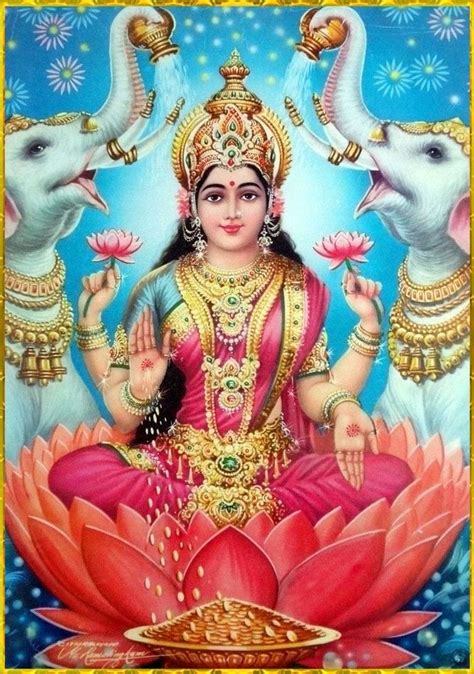
Pantheon: Hindu
Name meaning: a lucky omen, the goal.
Associations: wealth, beauty, love, abundance, fortune, power, fertility and prosperity.
Symbols: Lotus flower, elephant, owl, gold coins.
Lakshmi, according to Hindu mythology, was born from the churning of the ocean of milk, an event that was caused by the war between the Demons and the Gods. She was born fully grown, on a lotus, with a smiling, radiant face. She rides an owl and is often depicted by two elephants showering her. Elephants are a symbol of strength, luck and proserity. Owl (the symbol of the opposite nakshatra- jyeshta) is often seen with Lakshmi as a kind of guardian, always watching over her.
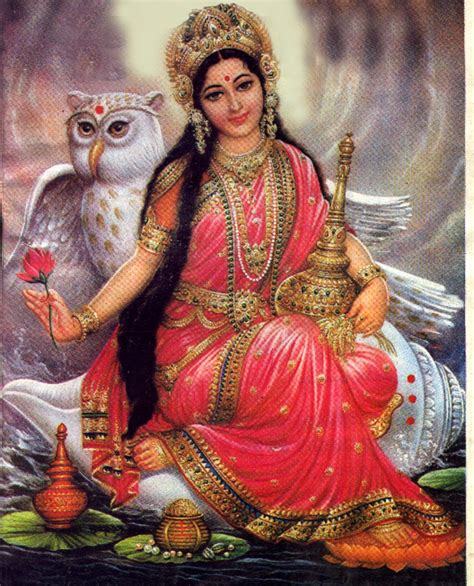
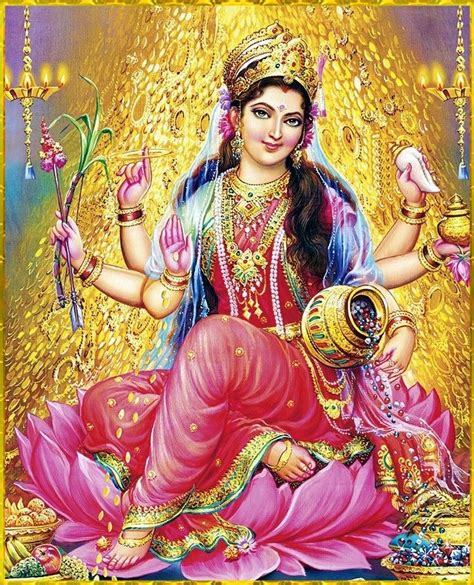
Rohini is the nakshatra of quick and rapid growth, its real life natives often being physically mature but internally childlike, often more dependant and submissive. This is the trait that makes this nakshatra the favourite of the moon, the planet moon is also literally exalted here, as well as Rahu.
One of the symbols of Rohini nakshatra is a chariot. It's a preserved tradition that brides ride in a chariot on the day of marriage. Lakshmi is often depicted seating on a chariot. Chariot/cart is also the symbol of the Taurus, the sign in which Rohini is located.
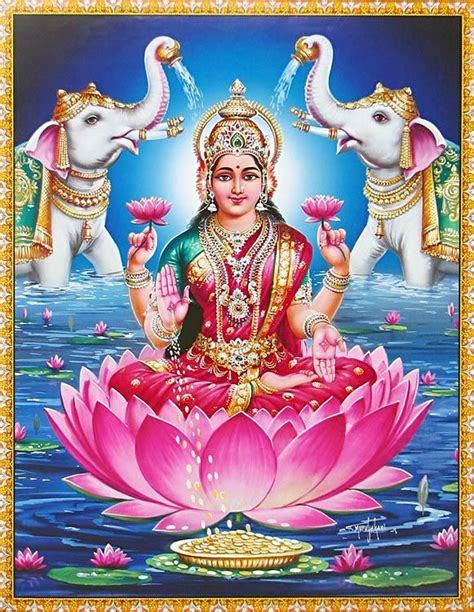
Some sources say that Lakshmi is associated with the moistness nessecary for growth (rohini's power).
You might have noticed that in most depictions she has four hands. They are said to represent the four aims of life: Dharma (righeousness), Artha (gathering necessary material recources), Kama (going after desires) and Moksha (liberation through knowledge). Her name literally means "aim" or "goal", so that definitely makes sense.
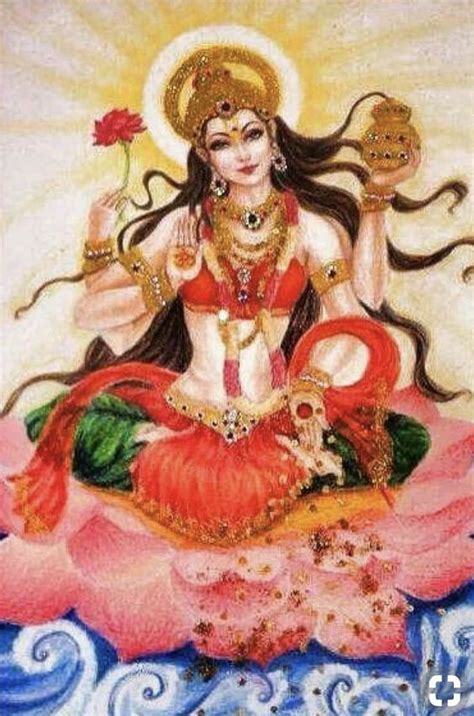
The deity assigned to Rohini is Prajapati- creator god. Rohini is the birth of the cosmic daugher and feminine at its most submissive. So submissive, that she does not question what influence is offered to her, she just absorbs it and gives it back.
Because Rohini is growth in all of its aspects, it's no wonder that the Hindu goddess of wealth is coorelated to it. Rohini is also closely connected to the Hindu culture overall. The overabundant use of bright, saturated colors and the frequent flower symbolism (flowers are connected to Rohini) is reminiscent of what people find beautiful as children, especially little girls.
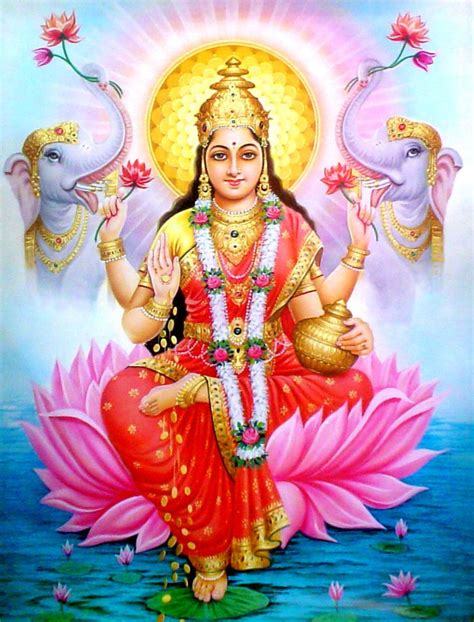
The overall analysis of Rohini is a completely different topic and claire nakti has done a stellar job at it. Hopefully this post made it clear why I think Lakshmi is the fit for Rohini. Also, do not think me lazy because I chose a Hindu goddess, it's literally the best one I could find, besides, Indian culture really suits Rohini.
Apologies to Rohini natives and everyone else, I couldn't find other deities that suited Rohini, besides Prajapati and Goddess Rohini herself, but I think that Lakshmi is pretty much on point. Let me know your thoughts, comment, reblog, like. Thanks for reading and take care 🤍
#rohini#rohini nakshatra#vedic astrology observations#vedic astrology#astrology#astrology observations#nakshatras#feminine#goddesses
195 notes
·
View notes
Note
Apparently!
Kartik didn't actually play Manjulika mostly, it was a stunt double named Pia Soni, who was the faceless dancer in the intro, and then the masked manjulika. She also claims to have done the climax tandav to the Sonu Nigam song, and in her comments under her reels says that Kartik's face was added using vfx.
That means he just did the dance as Debu in the green dress during the flashback and just at the end while attaining moksha apparently
Idk why this made me so sad like I got really attached and impacted by a mainstream actor playing a transwoman's role or a feminine role and they couldn't even care to have him do the full thing! Couldn't he have trained in classical dance and done it himself? He's trained hard for his other movies like Chandu champion so why was this done like this?
I mean I hope this lady is not telling the truth fully because I don't wanna believe he didn't do like 90% of it, especially the dance as the ghost
But she has pictures with the cast and director and photos of getting ready
Maybe she was just a body double due to Kartik's double role in the same scene?
Idek why this is so upsetting to me ugh but I thought yall would understand this very very niche thing lol
Anyway here's her Instagram account you can look at her bts reels and comments: https://www.instagram.com/piaaasoni24?igsh=MWEzZ253a3A3dGFsbA==
I've literally dm-ed her to confirm 😭
Hey! Sorry we took a while to answer this, but you raised many important points that we (the mods) had to discuss and come up with an answer that covered everything we wanted to say.
So, first of all, we agree with your main point! It would have been much nicer if Kartik Aaryan had learned and performed the dance himself. This movie is far from perfect at representing various identities, not just trans. You would have noticed this yourself, but bollywood has a track record of being bad with representation and the movie itself does other reps very wrong. To name just a couple, overall Bengali rep (randomly using Bengali words and sounds intermixed with Hindi) and using bits of Hukkus Phukkus (a Kashmiri song) out of cultural context. It's not a movie where the makers put a lot of thought into any of the identities they represented!
So then, how do we at the kaqcuille look at this movie? When we interact which SKTKS or BB3, we do it not because either are 'good rep' but its because we find potential for exploration in their stories and character arcs. We've adopted them because we want them and their queer identities treated right in a way that appeals to real queer people (us).
It is understandable if you feel betrayed by the double's IG post when Debu's dance was such an important point in your gender journey. That frustration is understandable, it would have held so much more meaning had KA did it himself. That being said, doubles and small time actors rarely get recognition for the work they put in and a part of us is ok if the double gets due credit for a standard industry job that she did in a mainstream movie!
We also understand having high expectations of KA as an actor because of the work he puts in in his dance numbers and movies in general. But we recently found out that for dance sequences in SKTKS where his abs show, KA was starved and dehydrated for hours and that left a bad taste in all our mouths. We had to take a moment before we could go back to appreciating the work he put in for SKTKS. It is valid to have high expectation of actors and we wish doubles and extras were unionized and getting due credit for all they do and what actors are expected of by current movie standards didn't come at the cost of exploitation. But we must remember when we interact with Bollywood's content, that there is an underlying exploitative, capitalist industry and we are going to see intersection of a myriad of issues when mainstream Bollywood chooses an identity or storyline for its character(s).
We understand and agree with your main points and hope this answer provides some more dimensions to think about as you wade through this 💜
#chahaa vani#eesha vani#kaqcu#prashn ka punchnama#bb3 debu#bhool bhulaiyaa 3#kartik aaryan#original#nonbinaryathena
12 notes
·
View notes
Text
Sant Tulsi Sahib: "External practices and formalism are worth nothing. The real sadhana [spiritual or meditation practice] is within one's own self."
Maharshi Mehi Paramhans, Philosophy of Liberation * : "One must go beyond the senses and Non-Conscious nature in order to realize the Supreme. For this reason, the outward practices of devotion are of not much use in attaining direct knowledge of the Supreme. The attainment of the state of Oneness is impossible by outer means. The state of Oneness is attained by going beyond all the realms of the nonconscious nature and by moving upward within the body. Waking and dreaming are the evidence that various states exist and can be altered."
"Within This Body" - Mystic Poem of Sant Tulsi Sahib of Hathras
Within this body
breathes the secret essence.
Within this body
beats the heart of the Vedas.
Within this body
shines the entire Universe,
so the saints reveal.
Hermits, ascetics, celibates
- all are lost
seeking Him
in endless guises.
Seers and sages perfectly parrot
the scriptures and holy books,
blinded by knowledge.
Their pilgrimage,
and fasting,
and striving
but delude
Despite their perfect practice,
they discover no destination.
Only the saints
who know the body's heart
have attained the Ultimate, O Tulsi.
Realize this, and you've found your freedom
(while teachers trapped in tradition
know only the mirage
in the mirror).
* NOTE: The Philosophy of Liberation (Moksha Darshan) is a "Sar Bachan Prose" of the Tulsi Sahib branch of Santmat one might say. In other words, it serves as a central text in the same way the Sar Bachan Prose of Swami Ji Maharaj has traditionally been regarded as a key text in the various Radhasoami Satsangs. Both of these are available for free online as texts, ebooks, and audio books!
Philosophy of Liberation: https://archive.org/details/PhilosophyOfLiberationAManualOfSantMatMysticism/page/n1/mode/2up
Sar Bachan Prose (Dayalbagh translation): https://archive.org/details/SarBachanRadhasoamiProseDayalBaghTranslation/page/n13/mode/2up
7 notes
·
View notes
Text
"Passangers", freedom from Guilt and the Spiritual Purpose of Mrigashira Nakshatra

"Passengers" is a 2016 film, starring two Mrigashira Nakshatra natives. Suffice it to say, this post will contain major spoilers for the plot of the film, so you should watch it first. My writing is more about exploring the meaning behind the events than the plot itself, which is relatively simple and involves a basic romantic theme of falling in love in outer space.
The motive of Mrigashira Nakshatra has many angles to explore, but in this text I would like to look at how important this Nakshatra, and Mars Nakshatras in general are in the context of the order of the zodiac wheel, with Moon coming before, and Rahu coming after.
To sum up the background events, that become the stage for all the action to happen. A spaceship is planned to be travelling for centuries over a very long distance to reach another habitable planet in a different galaxy. Everyone is hibernated on the ship, supposed to awaken shortly before arrival, looking forward to enjoying a blissful life on a virgin land, full of opportunity. However, the prospect of the idyllic future is disturbed, when the ship malfunctions, waking up one of the passengers mid-journey, sentencing him to a lone death.
The film goes through various plot twists and turns, exploring the theme of loneliness, desire to return to sleep, initial unwillingness to face the harsh reality, forbidden romance, as the desperate protagonist forcibly wakes up a female passenger to comfort him, unable to hold back his attraction to her despite feelings of guilt. Their relationship goes through a major crisis as the female Mrigashira native finds out her male counterpart essentially sentenced her to death to cope with his own desperate situation. But all of these squabbles lose their meaning in face of a real disaster - it turns out the whole ship has been malfunctioning since the beginning of the journey, and the whole operation is headed for collapse, endangering lives of thousands of people.
That piece of information becomes a turning point, not just for the process of saving lives of the whole ship, but a turning point for the protagonists' relationship that leads to forgiveness and absolution from guilt and loneliness. Because they now know, that the whole ship was in danger to begin with, and anyone who woke up before the planned arrival of the trip was in fact saving everybody else's life. Because they now know, that if it weren't for their sacrifice, everybody would have been lost. They now know, that their life and suffering had a purpose.
This brings us to the point of really understanding Mrigashira. The purpose of this Nakshatra is Moksha, spiritual liberation. Such Nakshatras always bring with them a theme of sacrifice, doing something difficult selflessly for the bigger picture, not for recognition but to right wrongs, that we might not even see repaired in our lifetime, instead offering them to future generations. Mrigashira is the only Mars ruled Nakshatra with such a mission. Even though all Mars Nakshatras like to take a stand and prove a point, Chitra does it for the purpose of Kama, social status and to win social games, Dhanishta for the purpose of Dharma, power, accomplishment and order, again with the goal of coming out on top. Mrigashira has an element of selflessness acquired through pain of loss and unbearable circumstances.
Outside of the context of the film, it teaches us how essential Mrigashira natives are for the survival of the human soul. In the previous Rohini stage, we are blissfully unaware and happy about it, as the Moon is barely developing its sensorium enough to feel and appreciate its surroundings. But Mrigashira points out to us, that something was wrong with the whole situation to begin with, and is willing to take a stand at the cost of its own life to change that. It brings to light major spiritual dysfunction in pre-existing, established systems, that would have otherwise led towards annihilation coming from unconsciousness. Mars Nakshatras call out the Moon Nakshatra stage on the fact, that while enjoyment within reason is acceptable, unconsciousness never is, and coming from Rohini to Mrigashira, it has deadly consequences for the soul.
However, awakening into consciousness and breaking down one's own selfish, attention grabbing tactics from the Moon stage is painful, something the ego struggles to let go of, initially, and something your environment definitely doesn't support, as you're the awakening one amongst the sleeping. As a result, one might feel like there is something wrong with them for being forced to upset the status quo...but in time, life reveals a plan larger than one's own life, that leads to progress and freedom for humanity. Life reveals truth, the serpent in the garden of Eden, that was trying to bring awareness to the events from behind the scenes all along.
Rahu Nakshatras only have the power to invent, create and move humanity forward because Mars Nakshatras stood up for something first. Ardra can only preach its truths, because Mrigashira stood up for that truth and opened the Pandora's box of these truths.
Mrigashira teaches us, that it's not ok, spiritually, to be unconscious. It teaches us that it's better to know the truth even if no one believes you, than to spend your life asleep, unaware of the evil lurking in the shadows. It teaches us that there is no such thing as perfection and life of value if it hasn't been earned, fought for and won. It teaches us that all things worth having need to be purified first, because now you know you can preserve these precious things even in face of opposition, so your enjoyment is well deserved. If you are a Mrigashira native, and you don't suffer from any afflictions to this Nakshatra, remember, most of the time if you feel something is wrong, you're right, and there is a larger purpose behind it. You're cleaning up a bigger mess than you know.
79 notes
·
View notes
Text
The Real Meaning of Moksha by Swami Bhoomananda Swamiji
Moksha Meaning - A clarity, a freedom you need from whatever troubles you have now. If there is no trouble, you don’t need moksha. These are days when people always speak about stress and strain. Stress and strain – actually this is what we mean by bondage. Moksha is the state where this displeasure, agitation, doubt or torment stands dissolved. That state of clarity where the mind is peaceful, the intelligence is very clear and transparent, is called moksha. Click here to learn more about Moksha - https://www.bhoomananda.org/writings/the-real-meaning-of-moksha/
#Moksha#Meaning of Moksha#Real Meaning of Moksha#Swami Bhoomananda Tirtha#Narayanashrama thapovanam#Spirituality#Spiritul Wisdom
0 notes
Text
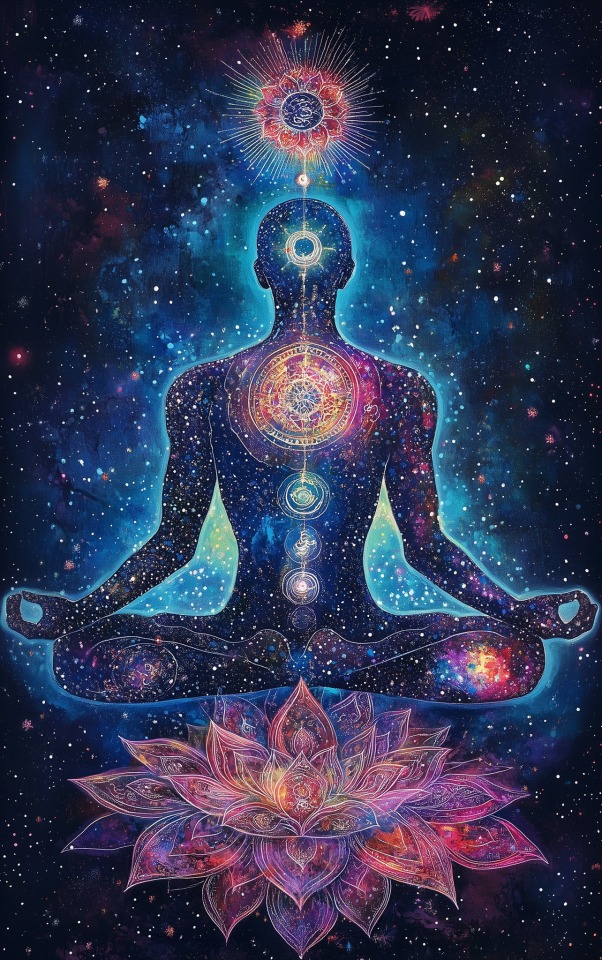
Moksha Talon Abraxas
Moksha is the summum bonum of life. Moksha is the fulfilment of life's purpose. Life ends on this earth plane when you attain Moksha or liberation from birth and death. The realisation of your real object in life is freedom or Moksha. Moksha bestows on you eternal life of undecaying bliss and perennial joy. Moksha is not annihilation. Moksha is the annihilation of this little self-arrogating ego only. Moksha is realisation of the identity of the individual soul with the Supreme Soul. By annihilating this little self you possess the whole of true universality, you attain an eternal life.
Mukti is obtained through the knowledge of the Self. To attain Jnana, you must have one-pointedness of mind (Ekagrata). Ekagrata comes through Upasana. Upasana comes through purity of heart (Chitta Suddhi). Chitta Suddhi comes through Nishkamya Karma Yoga. To do Nishkamya Karma, you must have controlled the Indriyas. The Indriyas can be controlled through Viveka and Vairagya.
Moksha is not to be regarded as a becoming into something which previously had no existence. Moksha is not something to be achieved. It is already achieved. Everything is one with Absolute or Para Brahman. What is to be achieved is annihilation of the sense of separateness. Moksha is the direct perception of that which has existed from eternity, but has hitherto been concealed from us on account of the veil of ignorance. Moksha is attainment of the Supreme Bliss or Immortality and removal of all kinds of pain. Moksha is freedom from birth and death.
Freedom or Mukti is your only real nature. You will have to know this truth only through direct intuitive experience. You will have to cut asunder the veil of ignorance by meditation on the Self. Then you will shine in your original pristine purity and divine glory.
Brahman, Self, Purusha, Chaitanya, Consciousness, God, Atman, Immortality, Freedom, Perfection, Bliss, Bhuma or the unconditioned are synonymous terms. If you attain Self-realisation alone, will you be freed from the round of births and deaths and its concomitant evils. The goal of life is the attainment of the final beatitude or Moksha. Moksha can be attained by constant meditation with a heart that is rendered pure and steady by selfless service and Japa.
Moksha is the highest benefit, Parama Prayojana. Jnana is the benefit which one gets in the internal (Avantara Prayojana). Just as plantain fruit is the highest benefit which one gets, and the leaves, etc., are the Avantara Prayojana in the interval before one gets the fruit, so also Moksha is the highest benefit and Jnana is Avantara Prayojana. Jnana is only the means to attain the highest bliss.
The Jiva falsely superimposes the body and others which are not Self upon himself and identifies himself with them. This identification constitutes bondage. The freedom from this identification is Moksha. That which causes this identification is Avidya or nescience. That which removes the identification is Vidya. Attainment of knowledge of the Self eradicates this Avidya and its effects. The Svaroopa of Moksha is the attainment of Supreme Bliss and removal of all kinds of sufferings.
The right knowledge of Brahman consists in knowing that He is one with one's own self. The difference between the Jiva and the Brahman lies only in the Upadhi or limiting adjunct. The Jiva, though he is Brahman in reality or essence is subject to the miseries of worldly existence as caused by his connection with the Upadhi of Antahkarana or the fourfold mind (the inner instrument). As there is no real distinction between them, it should be known that Brahman is identical with the Self. Hence it is said that those who know the real truth understand Brahman to be identical with the Self as declared in the great sentences of the Upanishads or Mahavakyas: "I am Brahman"-"This Self is Brahman." They even teach the same thing to their disciple in the words: "Tat Tvam Asi-Thou art That." Therefore it should be known that Brahman is identical with the Self.
The knower of Brahman becomes Brahman itself. Having become Brahman while yet alive, he is freed from the round of birth and death. Knowledge of Brahman alone is the means of emancipation or Moksha. by Swami Sivananda
29 notes
·
View notes
Text
The Philosophy of Advaita Vedanta
Advaita Vedanta is a non-dualistic school of Hindu philosophy that teaches that the ultimate reality, Brahman, is singular and that the individual self, Atman, is not separate from this ultimate reality. "Advaita" literally means "not two," indicating the core idea that Atman and Brahman are one and the same, and that any perception of duality (between self and world, subject and object) is an illusion.
Key Principles of Advaita Vedanta
Non-Duality (Advaita):
The central tenet of Advaita Vedanta is that there is only one ultimate reality, Brahman, which is infinite, formless, and beyond all distinctions. The apparent multiplicity of the world and separate selves (Atman) is considered Maya (illusion).
Atman (the individual self) is identical to Brahman. The idea that we are separate individuals with independent identities is an illusion caused by ignorance (Avidya).
Brahman:
Brahman is the universal, unchanging, infinite reality that underlies all existence. It is beyond time, space, and causality, and is the only true essence of everything.
Brahman is often described as Nirguna Brahman (Brahman without attributes), meaning it is formless, indescribable, and transcendent, but it can also be understood as Saguna Brahman (Brahman with attributes) when conceptualized as a personal God with qualities for devotional purposes.
Atman:
Atman refers to the inner self or soul, which is eternal and identical with Brahman. In Advaita Vedanta, realizing that one's true self (Atman) is Brahman is the goal of spiritual practice.
The ignorance (Avidya) of this fundamental identity between Atman and Brahman is what causes Samsara (the cycle of birth, death, and rebirth) and suffering.
Maya (Illusion):
The world of appearance, multiplicity, and individuality is called Maya. Maya is responsible for creating the illusion of separation and duality.
While the world appears real on a practical level (Vyavaharika), it is ultimately unreal on the absolute level (Paramarthika). Realizing the nature of Maya helps one see beyond the illusion to the true oneness of reality.
Avidya (Ignorance):
Avidya is the root cause of the human experience of duality and separation. It is the ignorance of the true nature of the self, leading to the mistaken belief in the individuality of the self (ego) and the reality of the material world.
Liberation, or Moksha, is attained through the removal of Avidya and the realization of one’s identity with Brahman.
Jnana Yoga (Path of Knowledge):
The primary method to attain liberation in Advaita Vedanta is Jnana Yoga, or the path of knowledge. This involves deep philosophical inquiry and meditation on the nature of the self, using teachings like "Tat Tvam Asi" ("You are That"), which emphasizes the unity of Atman and Brahman.
The study of Upanishads, Bhagavad Gita, and other scriptural texts is central to the pursuit of Jnana.
Liberation (Moksha):
Moksha is the realization of the oneness of Atman and Brahman, which frees one from the cycle of Samsara. It is the ultimate goal of human existence in Advaita Vedanta.
This liberation is not about going somewhere else or achieving something new, but about realizing what has always been true: that one's true nature is already infinite, eternal, and beyond duality.
Guru and Shravana, Manana, Nididhyasana:
A guru (spiritual teacher) plays a crucial role in guiding a disciple toward the realization of non-duality.
The traditional method of learning in Advaita Vedanta includes:
Shravana: Listening to the teachings of the scriptures.
Manana: Reflecting upon those teachings.
Nididhyasana: Deep meditation on the truth of the teachings, leading to the experiential realization of non-duality.
Advaita Vedanta and Other Philosophical Systems
Dvaita (Dualism): In contrast to Advaita's non-dualism, Dvaita Vedanta holds that the individual self (Atman) and the supreme being (Brahman) are eternally distinct. Dualistic schools argue for a personal relationship with God and a clear distinction between creator and creation.
Visishtadvaita (Qualified Non-Dualism): This school also sees unity in the universe but believes that individual souls and the material world are real parts of Brahman, distinct yet inseparably connected.
Buddhism: Although there are some similarities between Advaita Vedanta and Mahayana Buddhism (e.g., the idea of emptiness and the illusion of separateness), Buddhism rejects the concept of an eternal, unchanging self (Atman), which Advaita Vedanta upholds.
Advaita Vedanta is a profound philosophical system that focuses on realizing the ultimate oneness of all reality, transcending the illusion of duality. Through spiritual knowledge, self-inquiry, and meditation, one can awaken to the truth that the individual self (Atman) and the universal consciousness (Brahman) are not separate, leading to liberation from the cycle of birth and death.
#philosophy#epistemology#knowledge#learning#education#chatgpt#ontology#metaphysics#Advaita Vedanta#Non-Duality#Brahman and Atman#Maya and Avidya#Jnana Yoga#Moksha#Hindu Philosophy#Oneness of Reality#Self-Realization#Upanishads
8 notes
·
View notes
Text
Understanding Advaita Vedanta: A Clear and Accessible Introduction

In our first meeting here on the blog, I briefly mentioned Advaita Vedanta, a philosophy that has transformed my own worldview. Today, I want to present, in a simple and detailed way, what Advaita Vedanta is, its origins, main authors, and how this philosophy has impacted different cultures around the world.
What Does Advaita Vedanta Mean?
Advaita Vedanta is a deeply spiritual Indian philosophical tradition that emerged from the wisdom found in the sacred Hindu scriptures known as the Vedanta (literally "the end of the Vedas"—ancient Hindu texts).
“Advaita” means "non-duality" in Sanskrit, indicating that although our usual perception presents us with a reality full of differences and separation, there is a unique and indivisible supreme reality behind everything we perceive. This supreme reality, according to Advaita, is called Brahman (the Absolute, Universal Consciousness).
This philosophy teaches us to realize that our true self, called Atman, is not separate from Brahman—in essence, we are all one infinite and eternal consciousness.
Historical Origins of Advaita
The philosophy of Advaita initially developed in India, with roots already present in ancient texts like the Upanishads (800 BCE to 500 BCE), which are profound philosophical and spiritual dialogues investigating the nature of the self (Atman) and the Absolute (Brahman).
However, it was the sage Adi Shankaracharya (788–820 CE) who gave Advaita a systematic and clear structure. Shankaracharya wrote various commentaries on the main Vedanta texts, becoming a key figure for understanding and disseminating this philosophy. His logical and profound method provided the intellectual foundation that consolidated Advaita as one of India’s most important philosophical traditions.
Fundamental Principles of Advaita Vedanta
Non-duality (Advaita): All phenomena are temporary manifestations of one universal absolute reality (Brahman).
Brahman and Atman are identical: Our inner self (Atman) is the same as the universal absolute (Brahman)—there is no real separation between the individual and the universe.
Maya (illusion): Our common perception of duality and separation is caused by Maya, a sort of "veil" that obscures the unity we truly are.
Spiritual liberation (moksha): The ultimate goal of life is to realize our true nature as one consciousness, freeing ourselves from suffering and ignorance.
Key Authors and Representatives of Advaita Vedanta
In addition to Adi Shankaracharya, many other authors and sages have contributed to the development and popularization of Advaita over the centuries. Some of the most notable figures are:
Ramana Maharshi (1879–1950): A renowned Indian sage of the 20th century, famous for deep meditation practices and self-inquiry ("Who am I?").
Swami Vivekananda (1863–1902): A disciple of Ramakrishna who introduced Vedanta to the West for the first time at the Parliament of the World's Religions in Chicago (1893), influencing intellectuals and artists worldwide.
Nisargadatta Maharaj (1897–1981): Author of the famous book "I Am That", whose clear and direct teachings have helped many contemporary spiritual seekers.
In recent years, several Western authors and teachers influenced by Vedanta have made its ideas even more accessible, adapting them to modern languages and cultures—figures like Eckhart Tolle and Mooji are among them.
Countries Where Advaita Vedanta Is Practiced and Spread
Originally, Advaita Vedanta emerged and expanded in India, but its philosophical and spiritual message has resonated globally for centuries. Today, it is widely practiced in Western countries such as the United States, United Kingdom, Brazil, Germany, and Portugal, among others. There are many study groups, retreats, workshops, lectures, and literature available in various languages, making this universal philosophy increasingly accessible.
Why Explore and Practice Advaita Today?
In times of anxiety, stress, and an endless search for meaning, Advaita offers a profound existential perspective—liberating and deeply calming. Understanding our essential unity with the universe can profoundly transform how we see the world, others, and ourselves—helping us live with greater balance, harmony, and inner serenity.
I hope this introductory explanation has made Advaita Vedanta clearer for you, opening doors for future discoveries and reflections on our shared philosophical and spiritual path.
In upcoming posts, we’ll continue exploring this fascinating universe together!
3 notes
·
View notes
Text
Redefining Abundance and Wealth In a Capitalistic Society
We've all felt it - that gnawing emptiness after buying something we thought would make us happy. The disappointment when we realize that consuming material items brings only fleeting gratification, never lasting joy. Another promotion leads only to further exploitation by employers. A bigger house leaves us feeling lonelier and more disconnected. A newer phone fails to fill the void that only genuine human connection can satisfy. Yet we keep chasing these hollow markers of success, trapped in an endless cycle of wanting more.
In our capitalist society, we're taught that abundance means accumulation: more money, more possessions, more status. But what if true abundance isn't about what we own at all? What if we've been chasing a mirage while the real oasis of fulfillment lies in a completely different direction?
Unlearning the Capitalist Definition of Success
From our earliest years, we're conditioned to equate our worth with our productivity. Success becomes a simple equation: work harder, earn more, buy more, repeat. We chase promotions, compare ourselves to carefully curated social media lives, and feel guilty when we're not "hustling." This endless pursuit leaves many of us exhausted, anxious, and disconnected from what truly matters.
The irony is that capitalism requires us to feel scarcity to function. It needs us to believe we're never enough, never have enough, never do enough. This manufactured scarcity keeps us consuming, competing, and clinging to our resources instead of sharing them freely.
The Myth of Failure in Capitalist Society
In a system built on competition, failure isn't just an outcome - it's a tool of control. We're taught to see failure as a personal deficiency rather than what it often is: a natural part of human experience or resistance to exploitation. The fear of failure keeps us obedient, makes us work longer hours, take out bigger loans, and accept less than we deserve.
But what if failure, as we know it, is just another capitalist construct? In nature, there is no failure - only cycles, changes, and adaptations. In many indigenous cultures, what we label as 'failure' might be seen as learning, growth, or simply taking a different path. When we free ourselves from this artificial binary of success versus failure, we can begin to see our lives as journeys of experience rather than competitions to be won or lost.
Wisdom from Spiritual Traditions
Throughout history, spiritual traditions have offered us completely different stories and ideas about abundance. It isn't looked at as an achievement of something more, but as a letting go of what doesn't belong to you - sharing your truth and traditions, honoring yourself and others in their authenticity. That's the real freedom: recognizing that you are just enough in your wholeness.
Buddhist teachings remind us that attachment to material things is the root of suffering, while true wealth comes from cultivating inner peace.
Indigenous wisdom shows us that abundance flows from our relationships - with each other, with the land, with our ancestors and descendants, with community and traditions.
Islamic teachings emphasize that true wealth multiplies when shared, not hoarded. The more we give, the more abundance flows through our lives. Hindu dharmic principles teach us that prosperity includes not just material comfort, but dharma (purpose), kama (pleasure), and moksha (liberation).
Redefining What Makes Us Rich
When we expand our vision of abundance beyond the material, we discover wealth in unexpected places:
In the depth of our relationships and the strength of our communities. In the meals we share, the stories we tell, the ways we hold each other through hard times.
In our connection to the natural world - the glory of a sunrise, the peace of a forest walk, the miracle of growing food from tiny seeds.
In our creativity and cultural heritage - the songs we sing, the art we make, the traditions we keep alive and transform.
In the wealth of time - to rest, to play, to simply be present with those we love without rushing to the next thing.
In our spiritual growth - the wisdom we gain through difficulty, the compassion we develop, the peace we find within.
Practical Steps Toward True Abundance
So how do we begin cultivating this deeper abundance? Here are some practices to explore:
Start each day by naming three forms of non-material wealth in your life. Maybe it's the bird song outside your window, a friend's kind message, or a moment of perfect quiet. There's no wrong answer.
Practice voluntary simplicity. What can you let go of to create more space for what truly matters? Sometimes abundance comes not from adding more, but from needing less.
Strengthen your community bonds. Share meals, tools, skills, and support. Experience the abundance that flows when we move from isolation to interdependence.
Create art, music, beauty, meaning - not for profit or praise, but for the simple joy of expression. These gifts grow richer when shared.
Make time for stillness. In quiet moments, we often discover we already have everything we need.
The Path Forward
In rejecting capitalist definitions of wealth and success, we aren't losing anything - we're gaining everything. We're reclaiming our time, our connections, our authenticity, and our humanity. True abundance isn't about having more, it's about realizing we already have enough, we already are enough, and in sharing that abundance, we all become richer.
The journey to redefining abundance begins with a simple question: What makes you feel truly wealthy? The answer might surprise you, and it probably won't be found in any store.

#anti capitalism#anticapitalista#anti capitalist love notes#writer#writers and poets#spiritual healing#writers on tumblr#writerscommunity#writing#blog#healing#hope#failure#write#writeblr#writer stuff#welcome home#blog post#tumblr blog#spiritual#spiritual journey#perspective#spiritualgrowth#spirtuality#abundance#wealth#wealthy#self love#self care#self worth
3 notes
·
View notes
Text
JTTW Chapter 22 Thoughts
Chapter 22 for the @journeythroughjourneytothewest Reading Group!
That is not a river, that is a dessert! In real life it is and it is essentially described as such here as well given its width alone.
Also in the Anthony C. Yu and the German translation it is said to be eight hundred miles, while the J. F. Jenner translation reads three hundred miles instead. I don’t think that means anything, it’s just an observation I made. Same thing with how far away the people Sun Wukong got food from are, the Anthony C. Yu and German version naming the same distance while the J. F. Jenner one keeps it a little lower. Perhaps to have it be a little more realistic of a distance?
You see in this instance Sun Wukong isn’t quite ace, but fightsexual.
So in the Anthony C. Yu translation he says “ [w]hen I saw how delicious your fight with him was”, right? In the J. F. Jenner translation it goes “the sight of you fighting so beautifully gave me an uncontrollable itch” and in the German translation we get roughly translated ‘when I saw you so sweetly involved in the fight’. So the Anthony C. Yu version puts the focus on the fight itself here, while the other two focus on Zhu Bajie’s fighting specifically instead. Take from this detail what you will.
Hm, so it’s the beginning of autumn to be precise since just a month ago it was still summer.
Now they’re holding hands? Okay, this is turning into some queerplatonic stuff right there. Truly the instances of content being readable as shipworthy are starting to add up quite a bit.
Everyone having panicked when the cup broke does explain the anger of the Jade Emperor a bit better as it was quite disruptive, but it still doesn’t justify Sha Wujing’s punishment, I stand by that opinion.
Sun Wukong knowing what’s up! Just another testament to his intelligence!
Hm interesting that Moksha uses their nicknames here instead of their full religious names. I wonder where he got those from, does he regularly hear news about the group perhaps?
Alright with the skulls vanishing I think I can guess how that little raft worked. It obviously ran on magic, though I believe it used up any residual magic left or accumulated in the skulls in conjunction with the gourd and perhaps whatever was inside of it, which is why they kind of crumbled into dust afterwards. It’s just a guess though.
The gang’s all together now!
#xiyouji#journey to the west#jttw#sun wukong#monkey king#zhu bajie#sha wujing#jttw reading group#jttw book club
15 notes
·
View notes